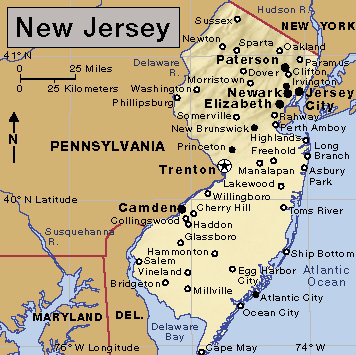Paterson, << PAT uhr suhn >> (pop. 146,199), was one of the earliest industrial communities in the United States. It lies in northeastern New Jersey, on the Passaic River. Paterson is located in the New York-Newark-Jersey City metropolitan area, which has a population of 20,140,470.

Paterson was founded in 1791. It grew from a small village near a massive waterfall on the Passaic River. Alexander Hamilton, the first U.S. secretary of the treasury, recognized the potential of the waterfall to provide power for manufacturing companies. He helped found the Society for Establishing Useful Manufactures (S.U.M.) to develop Paterson.
During the 1800’s, Paterson became a center for textile production, a site for the construction of some of the nation’s first steam locomotives, and a famous silk manufacturing center. For a brief time, the handgun developer Samuel Colt manufactured revolvers in Paterson.
In the early 1900’s, Paterson was the site of a silk workers’ strike and other labor disputes. The silk industry collapsed after the introduction of synthetic fibers. Many of Paterson’s textile mills closed as firms moved out of state. During the 1930’s and 1940’s, the city was an important manufacturer of aircraft engines.
Today, service industries are central to Paterson’s economy. But the city also manufactures cotton fabrics, fabricated metal products, printing machinery, and soap and other household cleaners. Many mills and other industrial sites are preserved in a historic district. Paterson has a mayor-council government.
